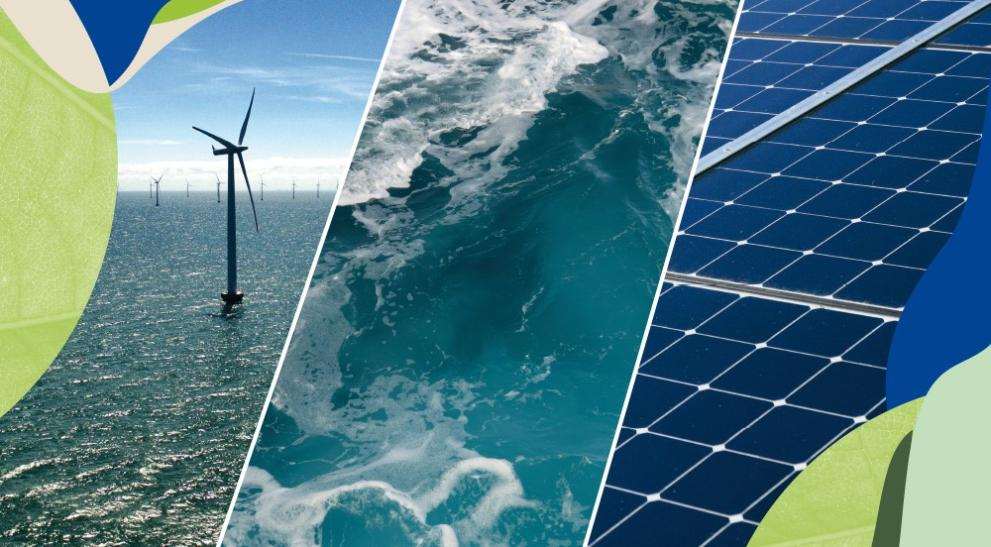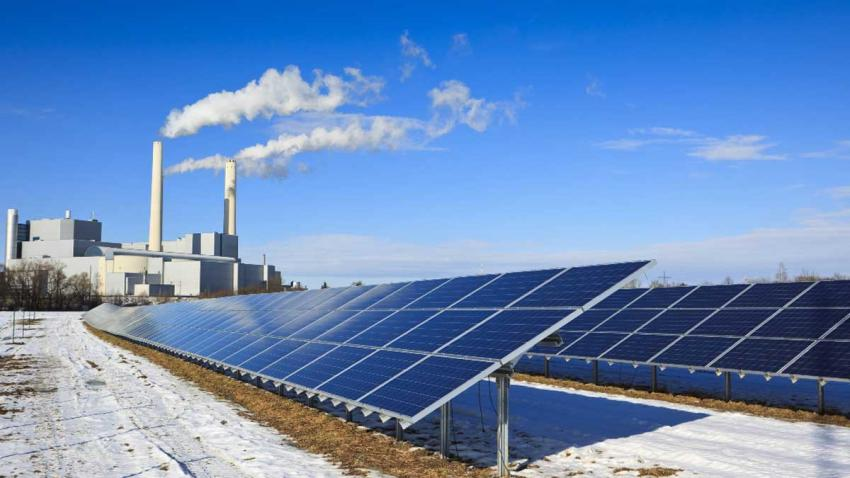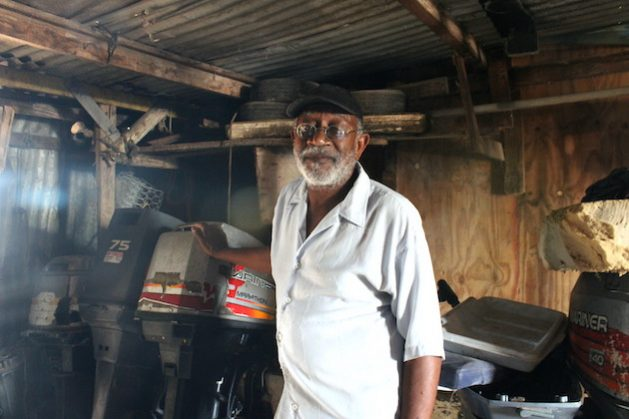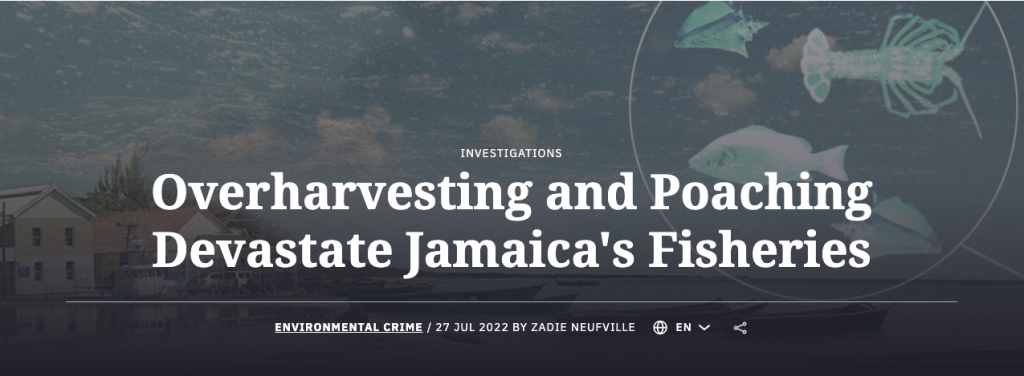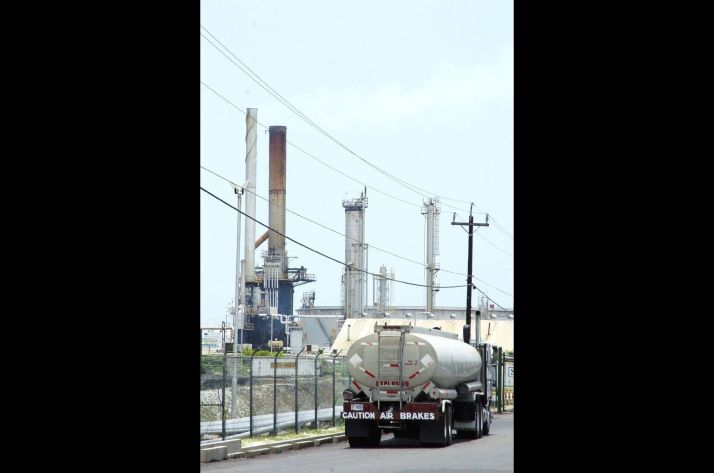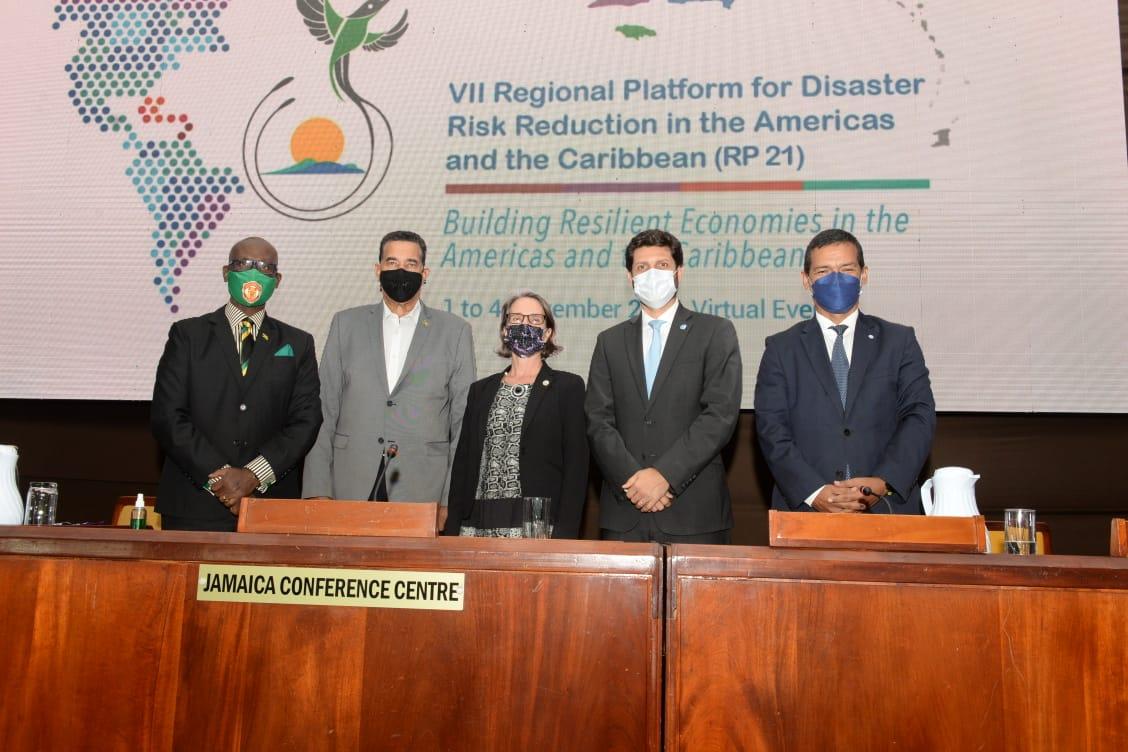by Zadie P Neufville
This article was first printed by InterPress Service on July 28.

In the 21 years it took the World Trade Organisation (WTO) to agree on a historic deal on fishing subsidies, the lives of fisherfolk in Rocky Point, Clarendon, have seen many ups and downs.
The largest fishing village on Jamaica’s south coast has been battered by nature and economic challenges which have left their mark. The fishing beach signs of frequent run-ins with Mother Nature and economic battles have sent many to ‘greener pastures’.
Rocky Point sits at the edge of the Portland Bight protected area outside the special fisheries management area (a protected zone). It is the country’s largest fishing village which, in its heyday, attracted fishers from up and down the coast. But while the town has grown, taking in surrounding cane fields and wetlands, the trade that built it, fishers say, is dying. In communities like these, subsidies take on a whole new meaning.
Fishermen Face Hardships

Fifty-year-old fisherman Bradley Bent has been supplementing his income as a boat repairman.
Decades of poor fishing practices, negligent fisheries management and frequent hurricanes, exacerbated by two years of pandemic-related restrictions, have taken their toll. These days, 50-year-old fisherman Bradley Bent has been supplementing his income as a boat repairman. These other skills he honed as a fisherman for more than three decades are helping him through the tough times.
Bent was hunched over, patching his boat with fibreglass under the searing heat of the morning sun. Around him, a group of repair men applied fresh paint to upturned boats. The faint sea breeze is putrid with the smell of chemicals, and the air pulses with the sounds of the buzzing generator and sanders as the men smooth the hull of a nearby boat.
COVID-19 restrictions grounded or reduced the sizes of most fishing crews and slashed their incomes by restricting them to shorter, less profitable distances in a bay virtually depleted of fish. Nowadays, fishermen are gone for days at a time but can’t afford to cover the cost of fuel or pay their bills.
Fishing is no longer an everyday affair at what was once the pride of south coast fishing, where fishermen could pull nets close to breaking with many of 11 species in the island’s waters, including parrotfish, snapper, wench-man, grunt, jack, turbot and butterfish, and seasonal hauls of wahoo, grouper and tuna.
Rocky Point fishers like Bent must now travel up to 70 miles up the coast or to the offshore fishing colony of Pedro Cays to find fish. In the last two years, things have gotten much worse. Some fishermen have left the business, forced out by the rising cost of fuel, equipment and the effort it takes to scrape by. Others, like George Henry, a fidgety forty-something, make do with menial jobs like gutting and scaling fish to make ends meet.
On the beaches around the Kingston Harbour – not so long ago, fertile grounds for shad, sprat, whiting and crabs – fishing is an exercise in futility, said Gladston White. The Jamaican fisherman ischairman of the Caribbean Network of Fisherfolk Organisations (CFNO), an organisation of fishers representing member states of the Caribbean Community (CARICOM).

George Henry has to make do with menial jobs like gutting and scaling fish to make ends meet
Fish provide almost half of the world’s 7.75 billion people with about 20 per cent of their average daily intake of animal protein and up to 50 per cent in some developing and least developed countries (FAO 2020). Providing an estimated 59.51 million jobs worldwide while earning the region small countries, including CARICOM, 60 per cent of the 164 billion US dollars in exports.
In theory, fishing should be held in check by its very environment: low fish stocks should mean fishing takes more time and costs more money, but this is not the case in depleted areas where food security depends on a good catch, and there is no other source of income.
Financial Assistance for Fishers
According to the ministry of Agriculture and Fisheries, the fishing community suffered significant losses during the COVID-19 lockdown. Government estimates indicate that the sector lost up to 23.1 million US dollars in earnings in 2020 alone.
So, when the government announced relief for fishers in November 2020, many in the fishing community were overjoyed. Unfortunately, only 4,740 of the 26,000 on the Fishermen’s register, or just over 11 per cent of the estimated 40,000 people who identify as fishers, received assistance.
The grant would cover their National Fisheries Authority (NFA) registration and ID cards, roughly 100 US dollars in vouchers to buy mesh for fish pots across the 137 fishing communities. An additional allocation of 200 US dollars each went to members of Parliament whose constituencies include fishing communities. The subsidies were to be paid to those fishermen who had been grounded for two months during COVID-19 lockdowns. These pay-outs or assistance are, in the general scheme of things, subsidies and are among those which the WTO and agencies like the FAO seek to ban.
According to the Organisation for Economic Co-operation and Development (OECD), fishing subsidies in 39 countries averaged 12 billion US dollars annually between 2012 and 2014. While there was a 20 per cent reduction between 2015 and 2018, since 2016, the trend has continued to increase.
In its 2020 The State of World Fisheries and Aquaculture, the FAO identified subsidies as a contributing factor to overfishing, IUU fishing, and the decline of regional fish stocks.
The World Bank’s The Sunken Billions Revisited reported in 2017: “The proportion of fisheries that are fully fished, overfished, depleted, or recovering from overfishing increased from just over 60 per cent in the mid-1970s to about 75 per cent in 2005 and to almost 90 per cent in 2013”.
According to the FAO, subsidies in large fishing nations like the USA, European Union, Japan, South Korea, Taiwan, Thailand, Russia, and China, contribute most to the over-exploitation of marine fish stocks.
WTO Proposed Ban On Subsidies
For the most part, Caribbean Community (CARICOM) governments, including Jamaica, believe the “WTO proposals are skewed to benefit the large fishing nations”, while those proposed for small, vulnerable economies were inadequate to address their interests.
In his presentation to Ministers attending the 12th Ministerial Conference (MC12) in Geneva (June 12 to 17, 2022), Prime Minister of Antigua and Barbuda Gaston Brown noted that most of the estimated USD 22 billion that is spent collectively on subsidies that incentivise unsustainable fishing practices each year, comes from the world’s largest economies.
Speaking on behalf of CARICOM, he pointed out that six of the Caribbean’s smallest countries collectively provide roughly “USD 9.7 million in subsidies that are considered harmful or less than one per cent of the global total.”
Subsidies for Caribbean fishers are few and far between. In times of crisis, the government steps in to provide much-needed help for the artisans – usually small-scale professional fishers- who account for more than 90 per cent of the industry.
Henry was one of those who did not receive a COVID-19 relief grant, and he is bitter. “I have to be doing this because only their friends get the help,” he said, angrily pointing to the bucket of fish he was paid to clean.
On the other hand, Ricky*(last name withheld on request), is grateful for the benefit but says it did not go far enough to offset the losses, especially with the double-whammy from the sargassum seaweed overwhelming their beach.
“The last time we got help, it was 15,000 US dollars, and not everyone got it,” he said adding: “We need help with the seaweed so we can continue to go to sea”, pointing to the huge pile of rotting seaweed covering beach and foreshore (area between the high and low tide marks).
Bent said the equipment cost is far too high for fishers to afford, given their declining incomes. Mesh costs between 100 and 300 US dollars, depending on the gauge (wire size) and does not include the cost of sticks, rope, and binding wire. Engines cost anywhere from 1000 US dollars (150,000 Jamaican dollars) or more, the men say.
The Jamaican government also gives tax exemptions for fishing equipment such as engines, boats and other gear to help ease the burden of a constantly shifting exchange rate. The men also purchase fuel at cost from the NFA, the agency responsible for regulating the island’s fisheries.
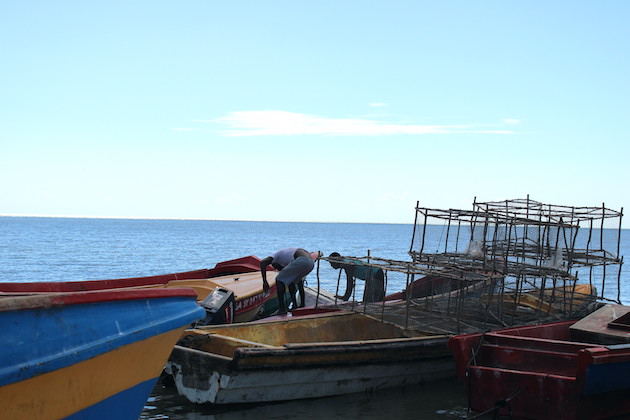
Estimates are that the fishing sector lost up to 23.1 million US dollars in 2020 due to the COVID-19 pandemic.
Donations categorised as Subsidies
In the Caribbean, donor agencies like the Japan International Cooperation Agency (JICA), United Nations Development Programme and the UN Food and Agriculture Organisation (FAO) occasionally offer funding support to develop fisheries management plans and infrastructure.
Other assistance comes from donor agencies through Environmental NGOs like the Caribbean Coastal Area Management Foundation (C-CAM), a local development organisation operating in and managing one of Jamaica’s largest protected areas on behalf of the government. This ‘assistance’ too would come under the scrutiny of the WTO.
Executive Director Ingrid Parchment explained that CCAM also manages three marine protected areas across the parishes of St Catherine and Clarendon. In the last 10 to 15 years, she said, subsidies have come in the form of help with gear in the aftermath of natural disasters like hurricanes, beach improvement projects and gear distribution.
In the Caribbean, 142,000 mostly rural dwellers are directly and indirectly dependent on fishing. The sector reportedly earns 150 million US dollars and saves the region at least three times that sum. Fisheries account for up to 8 per cent of gross domestic product in some CARICOM member countries. Belize at 3.9 per cent and Guyana at 8.1 per cent, according to data from the Caribbean Regional Fisheries Management (CRFM) Secretariat, the CARICOM body responsible for coordinating regional fisheries.
In Belize, for instance, CRFM reports that the fishing industry is primarily artisanal and directly supports the livelihood of more than 15,000 Belizeans.
Meanwhile, the Jamaican fishing industry provides direct and indirect employment to some 40,000 fishers folk. The sector also contributes to the livelihoods of more than 200,000, the Caribbean Regional Track of the Pilot Programme for Climate Resilience(PCCR) project reported in 2015.
The PCCR report noted that at the end of 2015, 23,631 registered fisher folk and 7,133 registered boats were operating from 187 fishing beaches and two cays located at the Pedro Bank. While fin fish makes up the bulk of marine capture, the export earnings are primarily from the lobster and Queen Conch fisheries.
Small Countries Support Fair and Effective Bans
Some ministers negotiating the deal felt the working draft would leave developing and least developed nations bearing the brunt of cuts to the livelihoods of their small-scale fisherfolk and create loopholes for richer countries to continue subsidising the most harmful fishing activities.
Speaking on behalf of the CARICOM and primarily the Eastern Caribbean nations, ahead of the agreement, Prime Minister Brown argued: “the most beneficial deal would be one that requires large fishing nations to prioritise focus on improving the health and population of the target species that are most impacted by subsidies,” rather than permitting larger nations to go farther to catch more fish.
The FAO has reported that fish stocks are at risk of collapsing in many parts of the world due to overexploitation. The organisation’s data shows that about 34% of global stocks are overfished, compared with 10% in 1974, an indicator that stocks are being exploited faster than the fish population can replenish itself.
In 2005 the WTO initiated a call for the prohibition of subsidies and a mandate for eliminating harmful subsidies to be included in Goal 14 of the UN Sustainable Development Goals (SDGs), which aims to address ‘Life Below Water’ through the sustainable management and protection of marine and freshwater resources.
In its December 20, 2021 briefing, the WTO said that a reduction in fishing capacity and effort would contribute to the recovery of stocks. The organisations have also argued that subsidies that “directly increase fishing capacity and may lead to overfishing are estimated at about 22 billion US dollars worldwide.”
If nothing else, the June 17 agreement addresses the SDG 14.6 targets, specifically, the elimination of fisheries subsidies.
“The package of agreements you have reached will make a difference to the lives of people around the world. The outcomes demonstrate that the WTO is, in fact, capable of responding to the emergencies of our time,” said WTO Director-General Ngozi Okonjo-Iweala said, in announcing the historic new deal on fisheries subsidies on June 17, 2022.
While not as ambitious as initially planned, it means that for the first time, a WTO agreement has been established to address environmental issues. The new multilateral treaty includes a set of rules prohibiting subsidies to fishers engaged in illegal, unreported and unregulated (IUU) fishing, catching overfished stocks and fishing on the high seas outside the control of regional fisheries management authorities.
The agreement includes provisions (Articles 3, 4 and 5) to withhold subsidies from fishing vessels and operators that have engaged in IUU fishing from subsidies, eliminate subsidies in areas where the stocks are overfished and for fishing and fishing-related activities in areas that are outside the control of regional fishing authorities as there are no conservation rules governing these areas. Article 4, however, allows for subsidies to help rebuild overfished stocks.
The agreement also includes oversight of vessels fishing inside foreign waters and for fishing of stocks for which information is limited. In addition, members are required to notify the WTO about the subsidies they provide.
And in response to those members who asked for help, said WTO Director-General, Article 7 includes the creation of “a funding mechanism to provide targeted technical assistance and capacity building to help developing and least-developed country members implement the Agreement.”
On June 17, Chile’s Ambassador Santiago Wills, chairman of the WTO fisheries negotiation committee, noted:
“We have an agreement to eliminate subsidies that contribute to illegal, unreported and unregulated fishing and to prohibit subsidies that contribute to overcapacity and overfishing, with appropriate and effective special and differential treatment.”
They believe the new WTO deal does not accommodate the special and differential treatment for less-developed nations that SDG 14.6 mandates.
The former head of now-defunct Jamaica’s Fisheries Division in the Ministry of Agriculture, Andre Kong, opposes the removal of subsidies as proposed by the World Trade Organisation(WTO) because “it does not take into account the realities in countries such as ours,” he said.
In its December 20, 2021 briefing, the WTO said that a reduction in fishing capacity and effort would contribute to the recovery of stocks. The organisations have also argued that subsidies that “directly increase fishing capacity and may lead to overfishing are estimated at about 22 billion US dollars worldwide.”
In Jamaica, the government teamed up with fishing communities to establish sanctuaries or no-take areas to replenish fish stocks, a combined 9,020 hectares across 18 fish sanctuaries and no-take areas, with another four under assessment. Other measures include a new Fisheries Act, legal and management frameworks and regulations to improve policing.
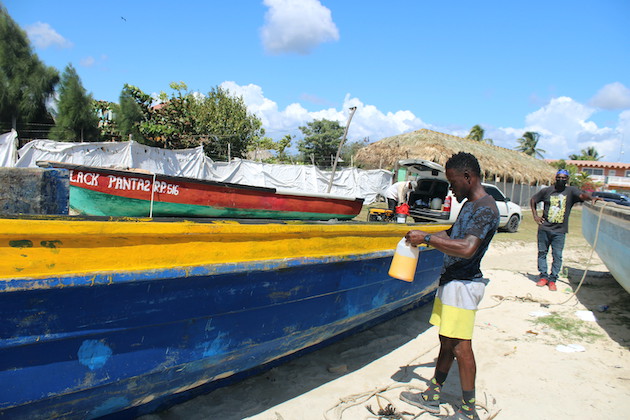
In the Caribbean, 142,000 mostly rural dwellers are directly and indirectly dependent on fishing.
Across the Caribbean and Latin America, authorities are coordinating through the CRFM, the Organisation of the Fisheries and Aquaculture Sector of the Central American Isthmus (OSPESCA) and others to implement environmental, livelihood projects and social programmes that aim to support the vulnerable populations that depend on fishing. In Clarendon and St Catherine, Parchment and her C-CAM Foundation continue to roll out donor-funded projects to ease the way for stakeholders.
Once negotiations are complete, countries like Jamaica will have up to two years to minimise the impact of their sector. Caribbean nations and their counterparts in Africa and the Pacific are looking to eliminate fuel and vessel construction subsidies that make distant-water fleets viable and support IUU fishing. So far, the deal has targeted high-seas fishing, which falls outside national jurisdictions.
Ministers from “African, Caribbean and Pacific countries kept their promise to continue negations for a “fair and effective WTO agreement” that would help to minimise the effects of harmful subsidies.
“Year after year, giant, foreign-flagged vessels encroach on Caribbean waters, competing with our local fishing fleets. In 2018, the most recent year for which data are available, six unique foreign distant-water fishing vessels were observed in OECS waters, propped up by over 99 million US dollars in state-sponsored subsidies,” the Prime Minister said.
The six are Organisation of Eastern Caribbean States (OECS) – Antigua and Barbuda, Dominica, Grenada, Saint Kitts and Nevis, Saint Lucia, and Saint Vincent and the Grenadines.
In Jamaica, the Ministry of Agriculture estimates that intercepted IUU vessels account for only 14 per cent of the IUU fishing that occurs in Jamaican waters. Between January 2011 and March 2019, ten foreign vessels were caught fishing illegally in Jamaican waters.
So even as the world celebrates the WTO deal on subsidies, the spectre of unfinished business hangs over the Caribbean. Governments have said that they will “keep negotiating”, but as long as the trade of high-value protected species like conch remains critical to the livelihoods of regional fishers, uncertainty persists.
This story was produced with the support of Internews’ Earth Journalism Network (EJN)
More information on IUU fishing interceptions in Jamaica is available in the booklet version linked below
